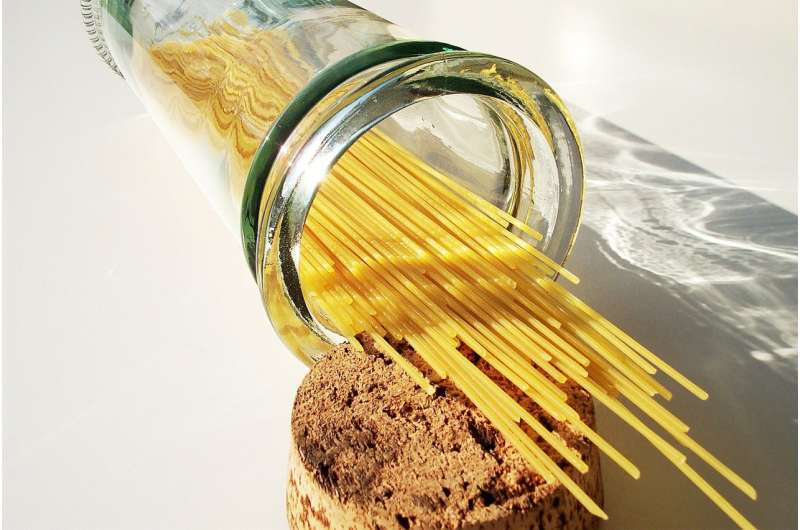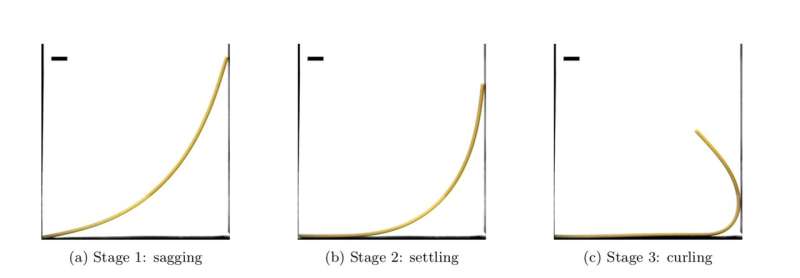January 8, 2020 report
A mathematical model to describe spaghetti noodle curling when cooked

Two mechanical engineers at the University of California, Berkeley have developed a model to describe the curling action of a spaghetti noodle when it is boiled. In their paper published in the journal Physical Review E, Nathaniel Goldberg and Oliver O'Reilly describe their study of the popular pasta and what they learned about its behavior when it is cooked.
Anyone who has ever boiled a pot of spaghetti noodles knows that the noodles transition from hard and brittle to soft and bendable, and the noodles tend to curl when cooked. Goldberg and O'Reilly noted that prior research had shown that spaghetti noodles tend to bend in a predictable way when placed in a pot of boiling water. They start out as straight rods and then as they begin to absorb water, they start to sag. As the sagging continues, they continue bending, and eventually, the top part of the noodle will bend inward, with each noodle forming a U shape. The researchers wondered what was behind the extra bit of bending. They assumed gravity played a role—and it seemed likely that the noodle's elasticity played a role, as well. To learn more, they carried out several experiments that including soaking noodles in room-temperature water for several hours to see if they would bend the same way. The also took pictures every 15 seconds to document the action. They used what they learned to create a mathematical model to describe the behavior of an individual noodle as it bent, and came up with a way to predict how rod-shaped noodles of any size would bend when boiled in water.
To create their model, the researchers started with several basic assumptions, such as the noodles not sticking to the pan as they were cooked. They added parameters to account for such factors as gravity, density and changes in elasticity as the noodles absorbed water. They report that the model they developed can be used to predict the deformation of spaghetti noodles—and it also showed that these changes in rigidity allowed for the permanent deformation and the shape of the noodle when ready to eat.

More information: Nathaniel N. Goldberg et al. Mechanics-based model for the cooking-induced deformation of spaghetti, Physical Review E (2020). DOI: 10.1103/PhysRevE.101.013001
Journal information: Physical Review E , Physical Review Letters
© 2020 Science X Network



















